|
|
America as it was drawn by Joseph Boggs Beale and other artists. part 1. |
| Joseph Boggs
Beale (1841-1926) was one of the few nineteenth-century artists who created
artwork expressly for reproduction on magic lantern slides. He lived in
Philadelphia and created there thousands of magic lantern images illustrating
among other things American history, epic poems by popular American poets,
Biblical stories, song lyrics, and genre scenes of everyday American life. His
work for magic lantern slides was done entirely in black, white and shades of
grey and he left it to the various optical companies that reproduced his work to
tint the individual slides. Sometimes the companies released the
same slide in different versions: untinted monochrome - the way Beale had
created the original art - thus being the least expensive; a slide coloured with a
limited palette being intermediate; and a full-colour slide, tinted by someone
with an understanding of colour theory, at the top of the line. Thus it is
possible to come across the same slide in a number of variations. The magic lantern slides below are real pieces of art and belong undoubtedly to the highest price category. The slides have the standard American size, 3.25" x 4" and are hand coloured. |
|
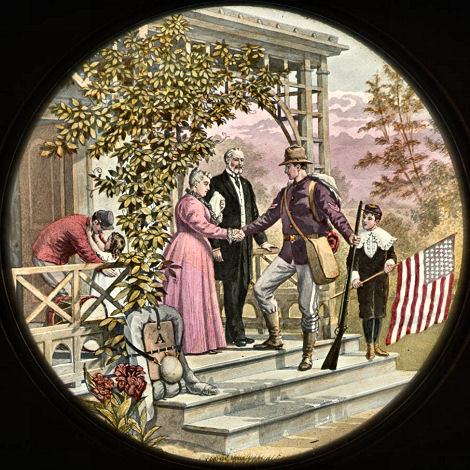 |
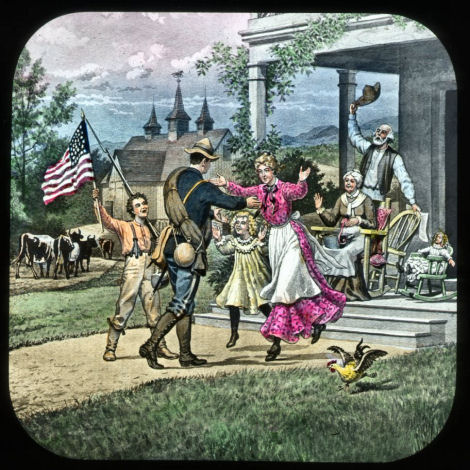 |
| #1
American Soldier Saying Good-bye to Family. |
#2 Soldier's return. |
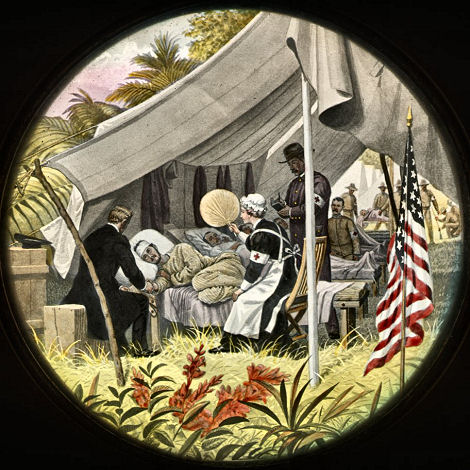 |
 |
| #3 Spanish
American War - Break the News to Mother. |
#4 Early
1900's school house. |
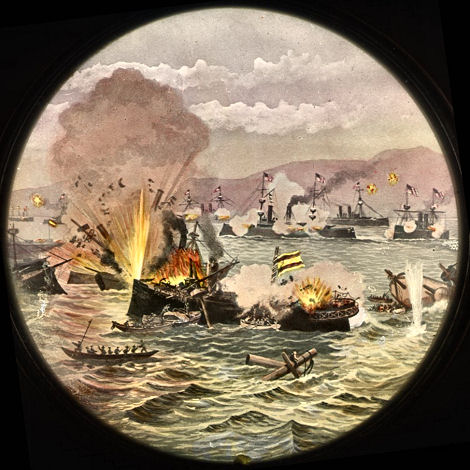 |
 |
| #5 Battle on
Manilla Bay. |
#6 Fort Sumter attack. |
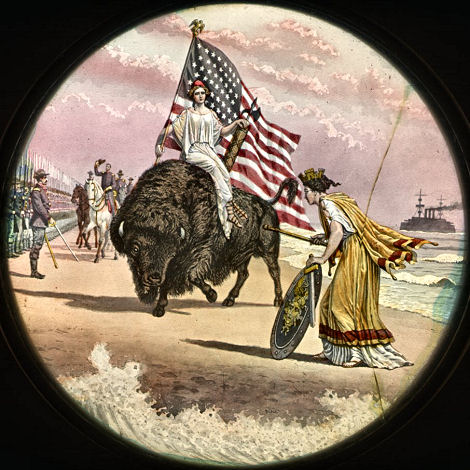 |
 |
| #7
Red, White and Blue - 1. Oh, Columbia the Gem of the Ocean, the
Home of the Brave and the Free.
|
#8
Red, White and Blue - 3. When war waged its wide desolation, and
threatened our land to deform. |
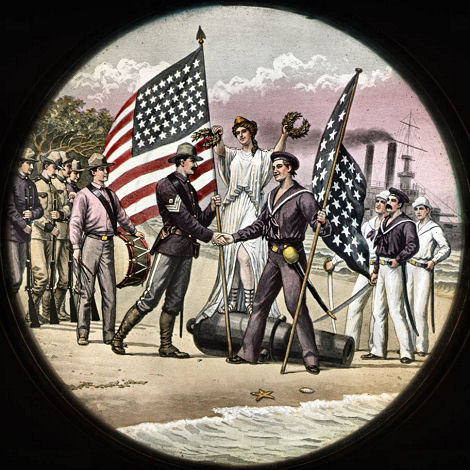 |
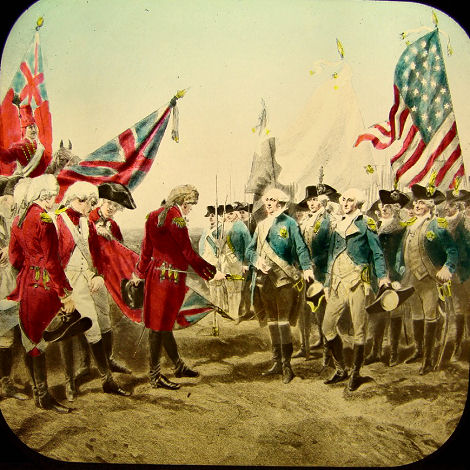 |
| #9
Red, White and Blue - 4. The wine cup, the wine cup bring hither, And fill you
it up to the brim. |
#10 Surrender of
Cornwallis. |
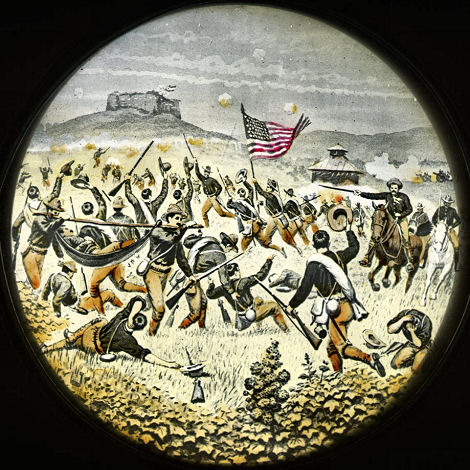 |
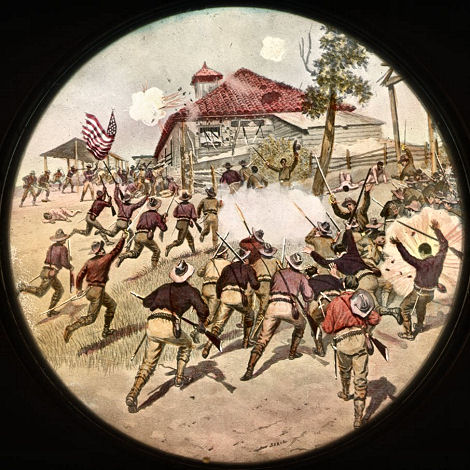 |
| #11 Battle
of San Juan Hill. |
#12
Battle of San Juan Hill. |
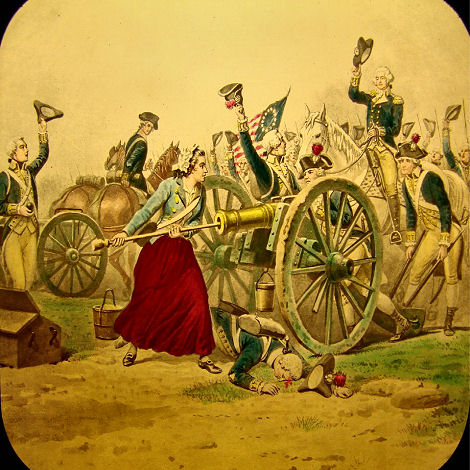 |
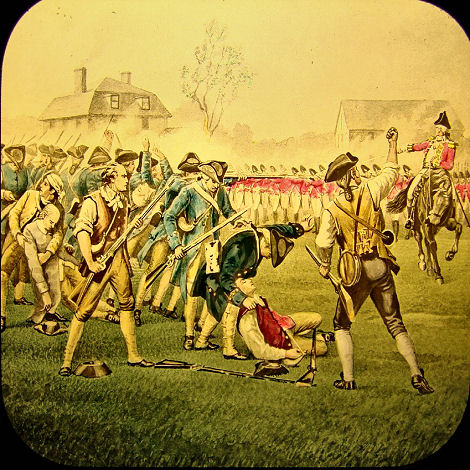 |
| #13 Woman manning the cannon. | #14 Battle of Lexington & Concord. |
|
Comment to #13: During the American Revolutionary War Battle of Monmouth, New Jersey (June 28, 1778,) Mary Hays was assisting her artilleryman husband by swabbing down the cannon between firings. Mary Hays was one of the war's 'Molly Pitchers', a nickname given by the troops to those women who brought water and food to the men on the battlefield. According to legend, Mary's husband collapsed from the heat, and she took over his duties. For the rest of the day, in the heat of battle, Mary continued to "swab and load" the cannon using her husband's rammer. At one point, a British musket ball or cannon ball flew between her legs and tore off the bottom of her skirt. Mary supposedly said, "Well, that could have been worse," and went back to loading the cannon. In illustrations of the scene, Mary's husband is always shown on the ground before the cannon, usually with indications of a head wound, and Mary is ignoring him for the sake of the war effort. Comment to #14: The Battle of Lexington. See below 'War and Peace'. |
|
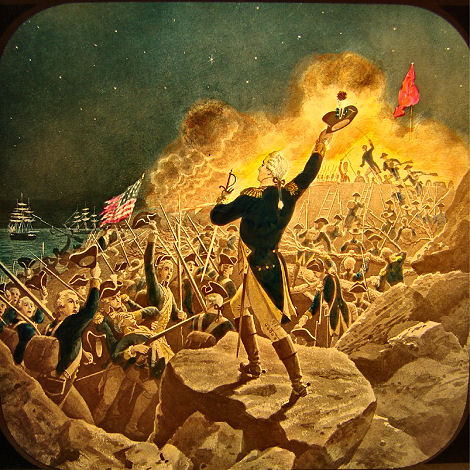 |
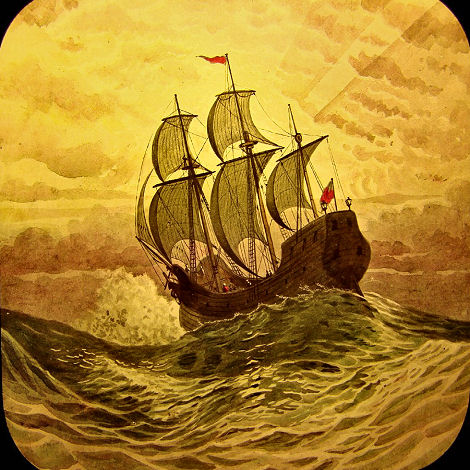 |
| #15 Battle of Stony point. | #16 The Mayflower. |
|
|
|
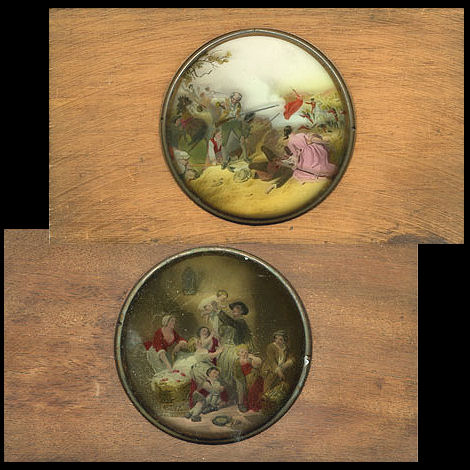 |
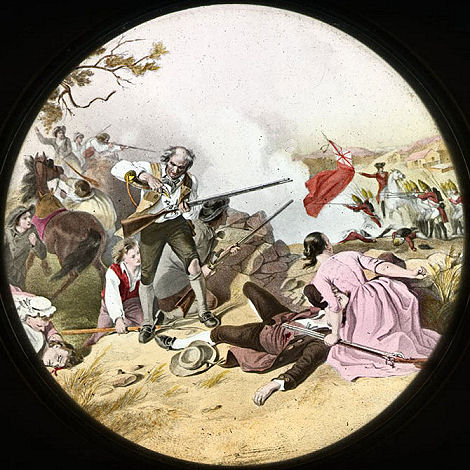 |
War and Peace,
a nice pair of thematically linked magic lantern slides, one showing war, the
other showing peace.
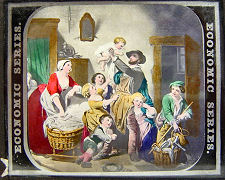 On the morning of April 19, 1775, British troops under the
command of Colonel Francis Smith were intercepted by a small band of colonials
in the town of Lexington. In the resulting skirmish, eight colonists lost their
lives. The central figure is a man feverishly reloading a musket. (If you were
good at this, it took about 20 seconds to reload. If you were bad at it, you
were probably dead.) On the morning of April 19, 1775, British troops under the
command of Colonel Francis Smith were intercepted by a small band of colonials
in the town of Lexington. In the resulting skirmish, eight colonists lost their
lives. The central figure is a man feverishly reloading a musket. (If you were
good at this, it took about 20 seconds to reload. If you were bad at it, you
were probably dead.)The battles of the American revolution often took place near the homes of the colonists. Women frequently had no choice but to get involved. On the extreme left of the slide, a woman in a day cap bends over a fallen man. On the right, a young woman in a well-fitting dress is picking up the musket of her fallen man to use it herself. Coming up the hill the British approach. The second slide is called 'Peace.' It is a nice counterpoint to the first. The two circular glass magic lantern slides are 3.25" in diameter and are mounted in 4" x 7" hardwood frames. The glass is held in place with a sturdy metal ring. At the right is a cheaper version of the Peace-plate in the Economics Series. |
|
 |
One of a series of magic
lantern slides illustrating the life of Abraham Lincoln. (Beale) The printed paper label
states: "4 - Lincoln's debate with Douglas.". Beale uses an American flag
to create a diagonal line that unites the two debating adversaries and you can
almost feel the heat of the sweltering August day.
 The
man in the blue shirt and yellow straw hat in the audience has one foot on a
bench with Beale's signature. This is noteworthy, because Beale didn't sign many
of his lantern images. He must have been particularly proud of this one. Quite
rightly! The
man in the blue shirt and yellow straw hat in the audience has one foot on a
bench with Beale's signature. This is noteworthy, because Beale didn't sign many
of his lantern images. He must have been particularly proud of this one. Quite
rightly!The banners held up by the spectators are all readable. They say among others: "Westward the Star of Empire Takes Its Way; The Girls Link On to Lincoln, Their Mothers were for Clay." At Lincoln's inaugural speech, his old adversary Stephen Douglas was present. The story goes, when Abe stood up to make his speech, he awkwardly looked around for a place to put his hat and cane. In a gesture of friendship and reconciliation, Douglas stepped forward and held them for him. |
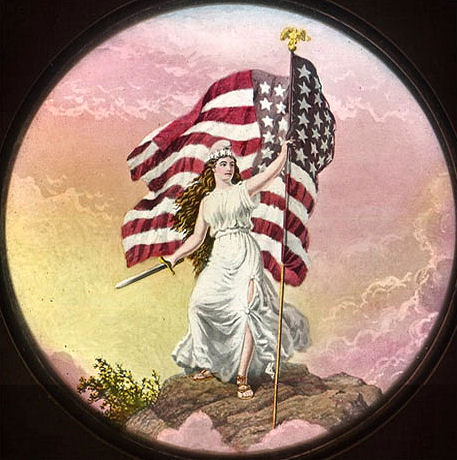 |
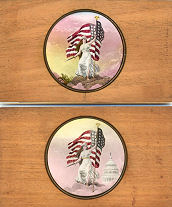
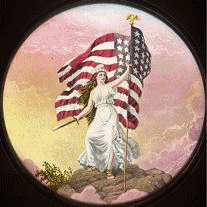 |
| Two glass magic lantern
slides in 4" x 7" hardwood frames. The circular glass of both slides is 3" in
diameter. (Beale) This nice pair of slides can be dissolved into each other. One slide depicts Columbia, Lady Liberty, wearing her liberty diadem, wielding a sword, and waving a US flag bearing an indeterminate number of stars. She is standing on a rocky prominence. In the other slide, Columbia appears in the same position as on the previous slide, only the rocky prominence has been replaced by a cloud, and behind her the Capitol dome appears. (See also: Dissolving Views) |
|
|
|
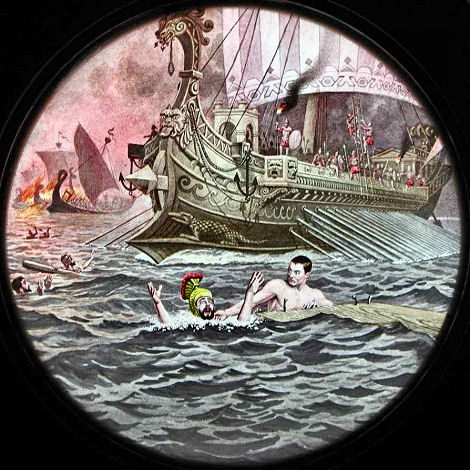 |
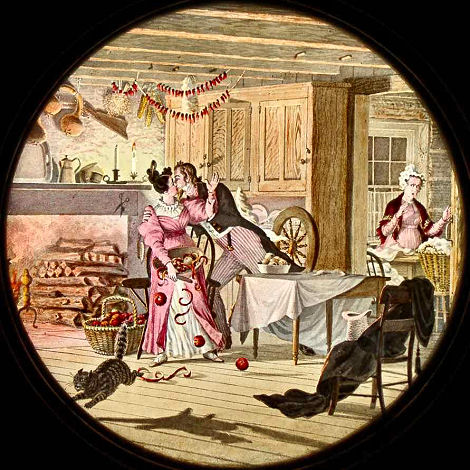 |
| Scene from Ben Hur. |
Courtin'. |
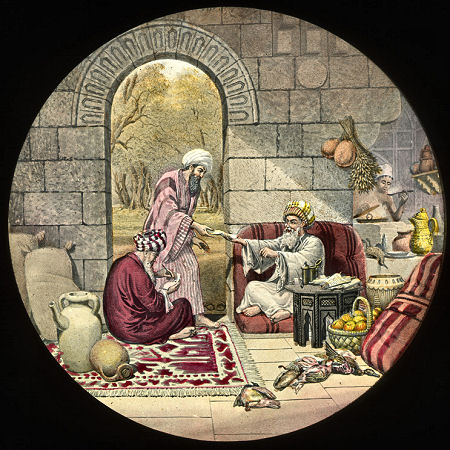 |
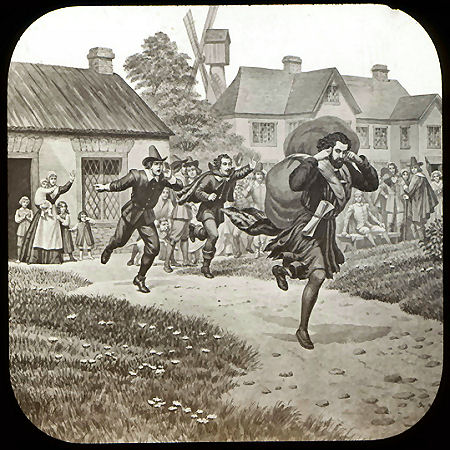 |
| The parable of the Unjust
Steward. |
Scene from The Pilgrimís Progress. Pilgrim fleeing. |
 Terry Borton is the showman of the American Magic-Lantern Theater, a touring company that re-creates Victorian magic lantern shows, the combination of projected images, live drama, and live music. He honours the work of Beale by centering his entire show on the themes and work of this great artist. He and his wife, Deborah, are avid collectors of Beale artwork and can be considered as real authorities on Beale's work. I suggest you visit their web site: www.magiclanternshows.com. |
 See also Beale's drawings for Uncle Tom's Cabin.
|
|
|
|
| |
©1997-2021 'de Luikerwaal' All rights reserved. Last update: 09-05-2021. |
|